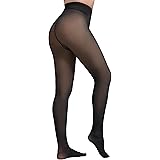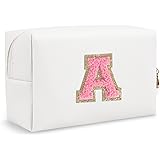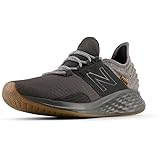Have you ever found yourself standing in front of your wardrobe, holding a beloved but worn-out garment, and wondering, “What happens next?” It’s a question many of us ponder, especially as awareness grows about the environmental impact of our consumption habits. The journey of our clothes, from creation to ultimate disposal, is often shrouded in mystery, yet it holds profound implications for our planet.
In the accompanying video, Harriet Wadsworth, a Senior Lecturer in Fashion and PhD student at Leeds Beckett University, sheds light on this critical issue. Her research zeroes in on the future possibilities within post-consumer textile waste, challenging the conventional linear model of fashion. Her work underscores the urgency of rethinking how garments are managed once they are no longer wanted or wearable, moving towards a more sustainable approach.
The Alarming Truth: A Flood of Textile Waste
The statistics surrounding textile waste are stark, painting a bleak picture of the industry’s environmental footprint. Millions of pounds worth of clothing are discarded annually in the UK alone, destined for landfill. This immense volume of waste is expected to continue its upward trajectory, with global consumption projected to soar.
Consider the sheer scale of the problem: a significant portion of what is purchased and worn ultimately contributes to ever-growing waste mountains. According to the data highlighted in the video, a staggering 57% of textile waste ends up in landfills. This material often takes hundreds of years to decompose, releasing harmful greenhouse gases like methane and leaching toxic dyes into the soil and groundwater.
Furthermore, an additional 25% of textile waste is incinerated. While this process can generate energy, it also releases pollutants and greenhouse gases into the atmosphere, contributing to air pollution and climate change. The burning of synthetic fabrics, in particular, can release microplastic particles and hazardous chemicals, posing further health risks.
Disturbingly, only a small fraction of discarded textiles is given a second life. It is indicated that a mere 8% of items are actually reused, and only 10% are recycled. This leaves a vast gap in our efforts to manage textile waste responsibly, highlighting the urgent need for more effective and widespread solutions.
Understanding the End-of-Life Challenge for Garments
The idea that clothing has a “sell-by date” is a core concept discussed by Harriet Wadsworth. Even consciously purchased or second-hand items eventually reach a point where they can no longer be resold or easily repaired. A favourite jumpsuit, for instance, might be bought pre-loved, giving it a second or even third life. However, rips, lost buttons, or stubborn stains can render it undesirable for resale, prompting the question: what then?
This “end-of-life” stage for garments is precisely where the critical gap exists in the fashion cycle. Traditional methods of disposal — landfill or incineration — are environmentally detrimental. The challenge lies in developing scalable, accessible alternatives that treat these discarded textiles not as waste, but as valuable resources. These materials still possess inherent worth that can be unlocked through innovative processes.
The complexity of modern textiles often complicates recycling efforts. Many garments are made from blends of natural and synthetic fibres, making mechanical separation difficult and chemical recycling expensive or unfeasible. This technological hurdle further exacerbates the problem, contributing to the low recycling rates observed today.
Embracing Circular Fashion: The aefre Initiative
Addressing these challenges head-on, Harriet Wadsworth is developing an innovative platform called aefre. This initiative is being designed to provide tangible solutions for post-consumer textile waste by fostering a circular economy within fashion. The Middle English word “aefre,” meaning “forever” or “everlasting,” perfectly encapsulates the brand’s core values: localized, personal, and everlasting products.
The central aim of aefre is to create a community-driven ecosystem where post-consumer textile waste is transformed into new, desirable products. This concept is supported by trend forecasting companies like WGSN, which have predicted that sustainable design will struggle without a collective, community-based approach. The fragmented nature of current sustainable efforts often hinders their impact, making collaboration essential for meaningful change.
A Platform for Sustainable Creators and Conscious Consumers
Aefre will function as a hub, connecting small designers and producers who are already working with post-consumer waste or 100% recycled textiles with a wider audience of conscious consumers. Many of these brands, though highly innovative, currently struggle to establish a significant online presence, making them difficult for consumers to discover. By consolidating these brands onto a single platform, aefre aims to increase their visibility and accessibility.
The initiative also extends to practical support for aspiring designers. A recycling centre is being established within Leeds Beckett University, creating a tangible resource for students and designers. Here, donated textiles will be sorted and made available for the creation of new products for the aefre brand. Harriet herself will provide guidance and support, from pattern cutting and creation to promotion, ensuring a cohesive and high-quality aesthetic runs through all products.
This model not only supports designers by providing income and traffic to their platforms but also serves as an educational tool for customers and the broader community. By showcasing how “waste” can be beautifully repurposed, aefre hopes to inspire greater participation in sustainable practices and expand awareness of circular fashion principles.
Beyond the Bin: Practical Steps Towards a Circular Wardrobe
While large-scale initiatives like aefre are crucial, individual actions also play a significant role in fostering a more sustainable fashion industry. Our collective decisions about how we buy, use, and dispose of clothing can profoundly impact the volume of textile waste.
- Embrace Second-Hand and Vintage: Choosing pre-loved items extends their lifespan and reduces the demand for new production. Thrift stores, consignment shops, and online marketplaces offer a vast array of unique and affordable options.
- Prioritize Quality and Durability: Investing in well-made garments that are designed to last means fewer replacements and less waste over time. Look for sturdy fabrics and construction techniques.
- Repair and Repurpose: Basic sewing skills can transform a damaged item. Mending rips, replacing buttons, or even altering a garment can give it a new lease on life. Old clothes can also be repurposed into cleaning cloths, crafting materials, or even new accessories.
- Support Ethical Brands: Seek out companies committed to sustainable practices, fair labour, and circular design principles. These brands often prioritize using recycled materials, natural dyes, and responsible manufacturing processes.
- Donate Wisely: When donating, ensure items are clean and in good condition so they can genuinely be reused. Research local textile recycling programs for items that are too worn for donation.
- Wash Less and Wash Smart: Over-washing can degrade fabric quality and release microplastics, especially from synthetic materials. Use cold water and air dry whenever possible to conserve energy and preserve garment integrity.
The transition to a fully circular fashion economy is a complex journey, but it is one that is increasingly being explored and championed by innovators like Harriet Wadsworth. Her work with aefre represents a significant step forward, aiming to provide a clear pathway for discarded textiles to find new purpose. By understanding the challenges and supporting such initiatives, we can collectively work towards a future where textile waste is minimized, and fashion truly becomes sustainable.











